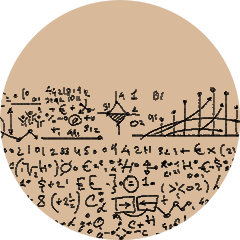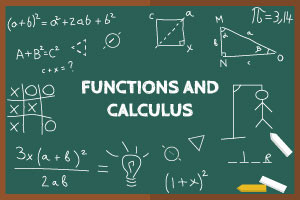Description
The Introduction to Calculus course's focus and themes address the most important foundations for mathematical applications in science, engineering, and commerce. The course emphasises key ideas and historical motivations for calculus while striking a balance between theory and application, resulting in mastery of key threshold concepts in foundational mathematics.
Students enrolled in Introduction to Calculus will:
- become acquainted with key concepts from precalculus, such as the manipulation of equations and elementary functions; and,
- become acquainted with the preliminary methodology of tangents and limits, as well as the definition of a derivative (third week),
- develop and practise differential calculus methods with applications.
- develop and practise integral calculus methods.
Syllabus :
1. Precalculus (Setting the scene)
- Real line, decimals and significant figures
- The Theorem of Pythagoras and properties of the square root of 2
- Algebraic expressions, surds and approximations
- Equations and inequalities
- Sign diagrams, solution sets and intervals
- Coordinate systems
- Distance and absolute value
- Lines and circles in the plane
2. Functions (Useful and important repertoire)
- Parabolas and quadratics
- The quadratic formula
- Functions as rules, with domain, range and graph
- Polynomial and power functions
- Composite functions
- Inverse functions
- The exponential function
- The logarithmic function
- Exponential growth and decay
- Sine, cosine and tangent
- The unit circle and trigonometry
- Inverse circular functions
3. Introducing the differential calculus
- Slopes and average rates of change
- Displacement, velocity and acceleration
- Tangent lines and secants
- Different kinds of limits
- Limit laws
- Limits and continuity
- The derivative as a limit
- Finding derivatives from first principles
- Leibniz notation
- Differentials and applications
4. Properties and applications of the derivative
- Increasing and decreasing functions
- Sign diagrams
- Maxima and minima
- Concavity and inflections
- Curve sketching
- The Chain Rule
- Applications of the Chain Rule
- The Product Rule
- Applications of the Product Rule
- The Quotient Rule
- Application of the Quotient Rule
- Optimisation
5. Introducing the integral calculus
- Inferring displacement from velocity
- Areas bounded by curves
- Riemann sums and definite integrals
- The Fundamental Theorem of Calculus and indefinite integrals
- Connection between areas and derivatives
- Integration by substitution
- Odd and even function
- The logistic function
- The escape velocity of a rocket








